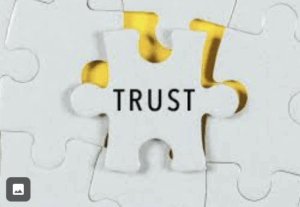Have you ever wondered why you react a certain way in relationships—why you might crave closeness, fear abandonment, or struggle to trust your partner? The answer often lies in something called attachment theory.
Attachment theory explores how our earliest experiences with caregivers shape the way we connect, communicate, and love as adults. Understanding your attachment style can be a powerful step toward improving your relationships and deepening emotional intimacy.
What Is Attachment Theory?
First developed by psychologist John Bowlby and later expanded by Mary Ainsworth, attachment theory describes the emotional bond between individuals—especially between children and their primary caregivers.
The consistency, warmth, and responsiveness we experienced as children often influence how we relate to others in adulthood. These patterns are known as attachment styles, and they typically fall into four main categories:
- Secure Attachment – Comfortable with closeness and independence.
- Anxious Attachment – Fears of rejection or abandonment; seeks reassurance.
- Avoidant Attachment – Values independence; struggles with emotional intimacy.
- Disorganized Attachment – A mix of anxious and avoidant behaviors, often linked to past trauma.
Understanding your attachment style isn’t about labeling yourself—it’s about recognizing patterns that influence how you connect with others.
How Attachment Affects Relationships
Your attachment style influences how you communicate, respond to conflict, and express love. For example:
- Someone with secure attachment tends to trust easily and feel comfortable relying on others.
- A person with anxious attachment may worry about their partner’s feelings and seek constant reassurance.
- Those with avoidant attachment may pull away or shut down during emotional moments.
These patterns can cause misunderstandings and tension, especially in intimate relationships. However, attachment styles aren’t fixed. They can evolve with awareness, effort, and often, the help of therapy.
Couples Therapy at Kingston & Co Counseling helps partners recognize these patterns and learn new ways of connecting that build safety and trust.
Healing Through Secure Attachment
The goal of therapy isn’t to erase your attachment history—it’s to help you build earned security. This means developing trust, self-awareness, and emotional regulation skills that foster healthy, balanced relationships.
In therapy, you can learn to:
- Recognize triggers tied to past attachment wounds.
- Communicate needs and emotions effectively.
- Build self-compassion and emotional safety.
Individual Therapy provides a safe space to explore your attachment patterns and learn new ways of relating to yourself and others.
Why Understanding Attachment Matters
Attachment is at the heart of human connection. When we understand our attachment style, we can:
- Break free from repetitive relationship patterns.
- Build deeper emotional intimacy.
- Foster more satisfying and secure connections.
This self-awareness not only improves romantic relationships but also enhances friendships, family bonds, and even your relationship with yourself.
Final Thoughts
Attachment theory reminds us that our need for connection is both natural and essential. While our early experiences shape us, they don’t define us. With insight and support, it’s possible to cultivate healthier, more fulfilling relationships—built on trust, empathy, and emotional safety.
If you’re ready to explore your attachment style or heal relational wounds, our team at Kingston & Co Counseling is here to help. Learn more about our services and take the first step toward stronger, more secure connections.







